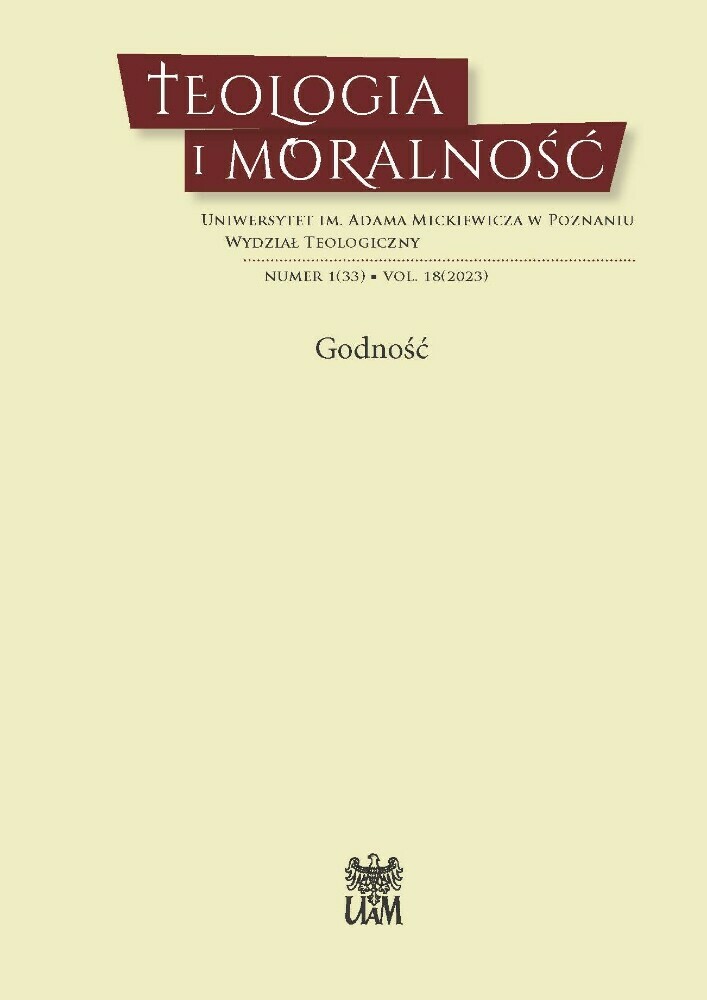Abstract
Susan Schneider Świadome Maszyny. Sztuczna inteligencja i projektowanie umysłów, przeł. Joanna Bednarek, WN PWN, Warszawa 2021, ss. 249, ISBN: 978-83-012-1952-9
The purpose of this review article is to present and comment on the contents of Susan Schenider’s book Artificial You: AI and the Future of Your Mind. The applied research method is analysis (extracting terms and definitions from the text and reconstructing them) and comparison (cross-referencing the notions used by the author with those used in other works). The conclusions emphasize timeliness of the issues addressed by the author and soundness of her advice for caution when deciding about modifying one’s own brain.
References
Boden, Margaret. 2020. Sztuczna Inteligencja. Jej natura i przyszłość, tłum. Tomasz Sieczkowski. Łódź: Wydawnictwo UŁ.
Bostrom, Nick. 2016. Superinteligencja. Scenariusze, strategie, zagrożenia, tłum. Dorota Konowrocka-Sawa. Gliwice: Helion.
Bostrom, Nick i Anders Sandberg. 2008. Whole Brain Emulation. A Roadmap. Dostęp: 05.10.2022. https://www.fhi.ox.ac.uk/brain-emulation-roadmap-report.pdf.
Bostrom, Nick. 2003. Are We Living in a Computer Simulation?. Philosophical Quarterly, 53, 243-255. DOI: https://doi.org/10.1111/1467-9213.00309
Eth, Daniel, Juan-Carlos Foust i Brandon Whale. 2013. The Prospects of Whole Brain Emulation within the next Half-Century. Journal of Artifiial General Intelligence, 4(3), 130-152. DOI: https://doi.org/10.2478/jagi-2013-0008
Gellers, Joshua. 2021. Rights for Robots. Artificial Intelligence, Animal and Environmental Law. Abington, New York: Routledge. DOI: https://doi.org/10.4324/9780429288159
Krajczyńska, Ewelina. 2010. Mózg najbardziej skomplikowaną strukturą we wszechświecie. Dostęp: 01.10.2022. https://naukawpolsce.pl/aktualnosci/news%2C370904%2Cmozg-najbardziejskomplikowana-struktura-we-wszechswiecie.html.
Kurzweil, Ray. 2018. Jak stworzyć umysł. Sekrety ludzkich myśli ujawnione, tłum. Katarzyna Zielińska. Białystok: Studio Astropsychologii.
Kurzweil, Ray. 2016. Nadchodzi Osobliwość, tłum. Eliza Chodkowska i Anna Nowosielska. Warszawa: Kurhaus Publishing.
Larson, Erik. 2021. The Myth of Artificial Intelligence. Why Computers Can’t Think the Way We Do. Cambridge, London: The Belknap Press of Harvard University Press. DOI: https://doi.org/10.4159/9780674259935
Lovelock, James. 2019. Novacene. The Coming Age of Hyperintelligence. Penguin Books.
Okoro, Angel. Does the Chinese Room Thought Experiment disprove true AI and mind uploading?. Dostęp: 27.09.2022. https://carboncopies.org/does-the-chinese-room-thought-experiment-disprove-true-ai-and-mind-uploading/.
O’Connell, Mark. 2020. Być maszyną. Przygody wśród cyborgów, utopistów, hakerów i futurystów w ich skromnych staraniach, by rozwiązać problem śmierci, tłum. Aleksandra Małecka. Warszawa: Wydawnictwo Krytyki Politycznej.
Rowling, Joanne. 2006. Harry Potter i Książę Półkrwi, tłum. Andrzej Polkowski. Poznań: Media Rodzina.
Schneider, Susan. 2021. Świadome Maszyny. Sztuczna inteligencja i projektowanie umysłów, tłum. Joanna Bednarek. Warszawa: WN PWN.
Schneider, Susan. 2011. The language of thought: A New Philosophical Direction. MIT Press. DOI: https://doi.org/10.7551/mitpress/9780262015578.001.0001
Science Fiction and Philosophy. From Time Travel to Superintelligence, red. Susan Schneider. 2009. Wiley-Blackwell.
Shapson-Coe, Alexander et al. 2021. A connectomic study of a petascale fragment of human cerebral cortex. Dostęp: 30.09.2022. https://www.biorxiv.org/content/10.1101/2021.05.29.446289v4.full.pdf. DOI: https://doi.org/10.1101/2021.05.29.446289
The Blackwell Companion to Consciousness. red. Max Velmans i Susan Schneider. 2007. Malden, Oxford, Carlton: Blackwell Publishing.
Vinge, Vernor. (2003). Technological Singularity. Dostęp: 30.09.2022. http://cmm.cenart.gob.mx/delanda/textos/tech_sing.pdf.
License
Copyright (c) 2023 Damian Szczęch

This work is licensed under a Creative Commons Attribution-NoDerivatives 4.0 International License.

